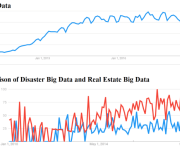The Role of AI and Predictive Analysis in Modern Perimeter Security
Most of us know that AI is making waves in every conceivable commercial niche, and attention here tends to focus on things like marketing and cybersecurity. However, there’s also a lot to be said about the potential that this tech represents in terms of physical security.
If you have yet to consider this, keep reading as we unravel the ins and outs of why the predictive power of AI is so relevant to protecting the perimeters of premises from a wide array of common concerns.
Leveraging Machine Learning for Anomaly Detection
Machine learning (ML) shines when it comes to anomaly detection in perimeter security. It does this by sifting through mountains of data, picking up unusual patterns that human eyes might miss. This is relevant given that 75% of businesses are putting more emphasis on security at the moment, with average spending up by 15.3%.
Advantages include:
- Real-Time Monitoring: ML models monitor live feeds from cameras and sensors. They spot irregular movements or behaviors immediately.
- Behavioral Analysis: These models learn what’s normal by analyzing data from past surveillance efforts. For example, they know if a vehicle is moving erratically or someone is loitering suspiciously. This same tech can be applied in lots of other contexts, from recruitment to finance, showing the extent of the flexibility at play.
- Adaptive Algorithms: As new threats emerge, these algorithms adapt without manual intervention, enhancing security measures over time.
- False Positive Reduction: By understanding the context better than traditional systems, ML reduces false alarms. This saves valuable response time.
Predicting Security Breaches with Historical Data Patterns
Predictive analytics is part and parcel of the perimeter security overhaul taking place thanks to intelligent tools. Mining historical data means potential breaches can be forecast before they happen. With losses from property crime topping $15.8 billion in the most recent data from the FBI, this type of foresight is valuable.
Features include:
- Pattern Recognition: These tools analyze past incidents to identify trends. If a breach occurred at night during specific weather conditions, the system flags similar situations.
- Risk Assessment: It evaluates which areas are most vulnerable based on historical data. This helps in allocating resources more efficiently.
- Proactive Measures: Instead of reacting to threats, predictive analytics enables proactive defense strategies by forecasting possible security events.
- Enhanced Surveillance Planning: Using predictions from historical patterns, you can adjust surveillance focus dynamically where and when needed.
Optimizing Gate Opening Timings with AI
AI takes operational efficiency up a notch by optimizing gate opening timings. It works seamlessly with automatic gate operators to streamline access without compromising security. There are several upsides, such as:
- Traffic Flow Management: AI predicts peak times for vehicle and foot traffic, adjusting gate schedules accordingly.
- Minimized Wait Times: By anticipating demand, it reduces bottlenecks, ensuring smooth passage while maintaining strict checks.
- Energy Savings: Optimized timings mean gates open only when necessary, saving energy and reducing wear on mechanical parts.
- Incident Response: In case of a security alert, AI can lock down gates instantly or redirect traffic away from danger zones.
Wrapping Up
From dealing with anomalies in real time and determining future risks based on historical data, to ensuring that access points are managed more efficiently and conveniently, AI and predictive analytics clearly have a lot to offer in a perimeter security context.
Moreover, if your business is already turning this tech to tasks in other departments, then you are ideally positioned to adopt adjacent tools. Being smart about automation and data use across the board will amp up your competitiveness, keep costs low, and ensure employees have what they need to succeed as well, so there are no downsides.
























